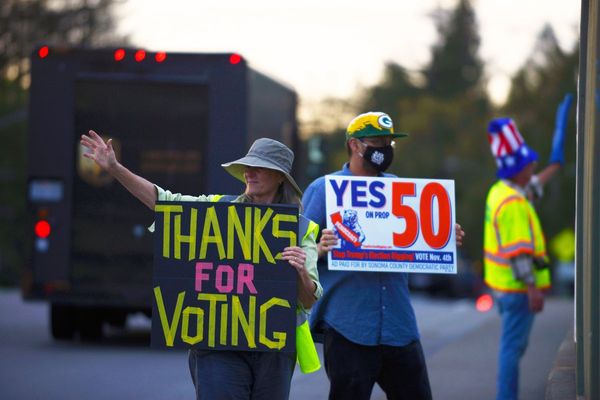
How much daylight do you like let in upon magic? If the answer is “Not too much, thank you”, have I got a four-part documentary for you! It is The Super Models, a gathering of four women – Cindy Crawford, Naomi Campbell, Linda Evangelista and Christy Turlington – whose beauty and glamour dominated the media and the aesthetic of the late 80s and most of the 90s.
There were actually five supermodels, but an editorial decision has clearly been made that, bar a dedication to her memory in the closing credits of the second episode, Tatjana Patitz should barely be mentioned. Perhaps this is because she took a step back from the fashion world earlier than the others did and never had quite the same cultural impact, or perhaps because her recent death at the age of 56 would have taken some of the gloss off the shiny product being prepared. Either way, because of the insistence throughout on the bond the models forged early in their strange new world and the support they offered each other in their careers, it seems an increasingly odd omission.
This spectre aside, it is a feast of nostalgia for anyone over a certain age. For others, it may be a fascinating glimpse into a vanished world in which magazines were a portal to greatness, all photos amounted to art and a handful of figures could dominate a cultural landscape.
Interviews with the individual women are interleaved with footage from their early careers and into their glory days. Only Evangelista had been interested in fashion from a young age and wanted to be a model. Campbell was training to be an actor and dancer when she was spotted with friends in Covent Garden by scout-of-scouts Beth Boldt. Crawford had a scholarship place to study chemical engineering at Northwestern University, Illinois, when fortune came calling. Turlington was mucking out a stables when a photographer spotted her and set her on the path to a contract with the Ford Models agency.
Much is made of how they overhauled the traditional modelling trajectory. Instead of being “living hangers”, as Washington Post critic Robin Givhan characterises their predecessors, they brought their personalities to the work and made the virtually unprecedented move from print to catwalk. From there they diversified further, into global advertising campaigns and commercials (Crawford for Pepsi, Turlington for Calvin Klein’s Eternity fragrance) and from there – well, anywhere they wanted. Campbell did all this in the teeth of embedded racism too, missing out on shows and advertising because the powers that be didn’t want to use a black model, though Evangelista in particular did what she could to redress the balance, telling people that if they didn’t book Naomi they didn’t get her either.
Once the supermodel era gave way to grunge and the waif-like simplicity of Kate Moss, the gang stayed friends but went their different ways: back to school, or developed other businesses, worked the celebrity circuit or turned to charity work as mood and temperament took them.
It is fascinating and enormous fun to spend time with them now – still beautiful but with the confidence (apart perhaps from Evangelista, whose recent years have been much the hardest of the group’s) and wisdom of age. But there are obvious lacunae. One is Campbell not being pressed on her much-reported bad behaviour (which she puts down to a drink problem, unresolved abandonment issues and misreporting here). Another is any real acknowledgment of the dark side of an industry that fetishises female youth and is built on objectifying the body, and which they entered long before they were out of their teens. But we all know too much already (not least via the recent documentary Scouting for Girls: Fashion’s Darkest Secret, about many of the agents and bookers instrumental to models’ careers at the time) for it to be ignored entirely. Thus we get passing acknowledgment of how extraordinary it was that they were left to navigate that world largely alone at such a tender age, but never any suggestion that any of them were the subject of unwanted attention or that the industry had any kind of problem with sexual predators. Only in the penultimate episode, when Evangelista tearfully recalls escaping, at the age of 27, her abusive six-year marriage to Gérald Marie (former head of Elite Model Management, Paris) and the multiple claims from women later on that he raped and assaulted them (all of which he denies), is there any real sense of what lurked beneath the glamour. Given how much is made throughout of how groundbreaking and “empowered” – a word I have yet to hear or see anywhere without feeling it should be in quotation marks – these women supposedly were/are, it would have been nice to see some of it put into practice.
• The Super Models is available on Apple TV+ now.







